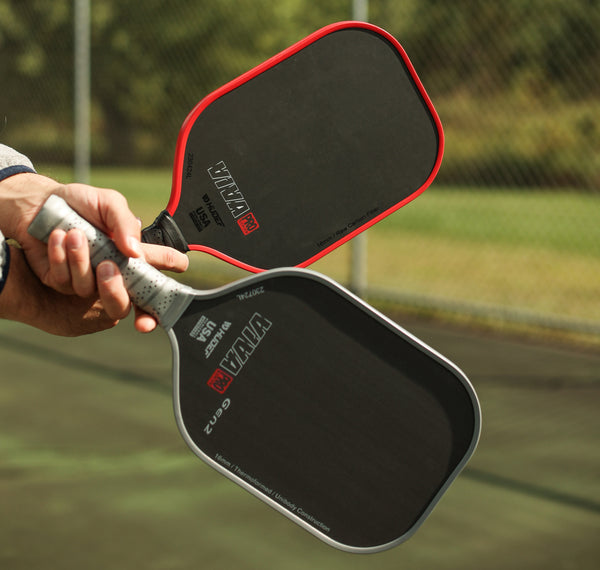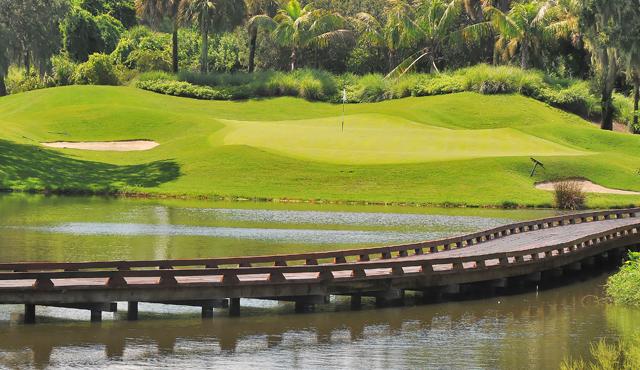Pickleball is different than tennis because it uses a plastic wiffle-like ball that is less bouncy and doesn’t fly as fast through the air, and the paddle used in pickleball is shorter and lighter than a tennis racket. Additionally, serving in pickleball is done underhand, making it easier to hit and return.
This is why many people find pickleball more enjoyable and accessible compared to tennis. Pickleball and tennis differ in terms of court size, rules, and equipment. Tennis courts are longer and wider than pickleball courts, and pickleball paddles are smaller and lighter than tennis racquets.
The game of pickleball has gained popularity due to its easier learning curve and unique style of play.
Key Distinction 1: Equipment And Playing Surfaces
Differences In Paddles
In terms of equipment, one key distinction between pickleball and tennis lies in the paddles used to play the game. Pickleball paddles are designed specifically for the sport and differ significantly from tennis racquets. HTML Source:Differences In Paddles
Variation In Ball Types
Another important difference between pickleball and tennis is the type of balls used. While tennis uses standard tennis balls, pickleball utilizes a unique plastic wiffle-like ball. This variation in ball type affects the speed, bounce, and flight characteristics, making pickleball less bouncy and slower through the air compared to tennis. HTML Source:Variation In Ball Types
Playing Surface Disparities
The playing surfaces for pickleball and tennis also differ significantly. Tennis is played on a traditional tennis court, which is longer and wider compared to pickleball courts. On the other hand, pickleball courts have a smaller playing area, allowing for a more compact and dynamic gameplay experience. HTML Source:Playing Surface Disparities
Overall, when comparing pickleball to tennis, key distinctions in terms of equipment and playing surfaces become apparent. The differences in paddles, ball types, and playing surface disparities contribute to unique gameplay experiences for both sports. HTML Source:
Credit: hudefsport.com
Key Distinction 2: Scoring And Game Rules
Understanding Pickleball Scoring
Pickleball scoring follows a unique system that differs from tennis. In pickleball, only the serving team can score points. The scoring starts at 0-0 and the first server starts on the right side of the court. To serve, the player must stand behind the baseline and use an underhand motion to hit the ball diagonally across the net. If the serve is successful, the receiving team must let the ball bounce once before returning it. The serving team continues to score points until they commit a fault, such as hitting the ball out of bounds or into the net. Once a fault occurs, the serve switches to the other team, and they have the opportunity to score. The game is played until one team reaches 11 points, with a 2-point advantage to win.Familiarizing With Tennis Scoring
Tennis scoring, on the other hand, is slightly more complex. The scoring system in tennis uses a mix of numbers and unique terms. A tennis match starts with a score of 0-0, also known as love-all. The server stands behind the baseline and hits the ball over the net to the opponent’s side. If the serve is successful, the players continue to rally, aiming to keep the ball in play while trying to score points. In tennis, players can score points even if they are not the serving team. The scoring starts at 15, followed by 30, then 40. If the score reaches 40-40, it is called deuce. From deuce, a player must win two consecutive points to secure the game. When a player wins six games, they win a set, and typically a match is played as the best of three or five sets.Notable Differences In Game Rules
Aside from scoring, there are several other notable differences in the game rules of pickleball and tennis. Firstly, pickleball court dimensions are significantly smaller than tennis courts. A pickleball court is 20 feet wide and 44 feet long, while a standard tennis court is 27 feet wide and 78 feet long for singles matches. Additionally, pickleball has a no-volley zone, or the kitchen, which stretches 7 feet from the net on both sides. Players are prohibited from hitting a volley (hitting the ball in mid-air) within this zone. In tennis, there is no such restriction. Moreover, the equipment used in both sports differs. Pickleball is played with solid paddles made of materials like wood, composite, or graphite, and a plastic ball with small holes. Tennis, on the other hand, uses strung rackets made of materials such as graphite or aluminum, and a felt-covered rubber ball. The smaller surface area of the pickleball paddle and the lighter plastic ball make pickleball easier to handle for beginners and players with less strength. Overall, the scoring and game rules in pickleball and tennis have distinct differences. It is essential to understand these distinctions to fully enjoy and participate in each sport. So whether you prefer the simplicity and ease of pickleball scoring or the complexity and strategy of tennis scoring, both sports offer unique and exciting experiences on the court.Key Distinction 3: Physical Demands And Gameplay
When it comes to comparing pickleball and tennis, one of the key distinctions lies in the physical demands and gameplay of each sport. From the contrasting physical demands to the unique strategies employed, understanding these differences can help players choose the sport that aligns with their preferences and abilities.
Contrasting Physical Demands Of Pickleball And Tennis
Let’s take a closer look at the physical demands of pickleball and tennis. While both sports require agility, strength, and coordination, there are notable differences in the emphasis placed on these aspects.
In pickleball, the smaller court size and slower pace of play result in less running compared to tennis. This makes pickleball a more accessible and beginner-friendly sport, perfect for those who may not have the endurance or speed required for tennis.
On the other hand, tennis demands more endurance and speed due to its larger court size and faster gameplay. Players need to cover more ground and have the stamina to keep up with intense rallies that require quick movements and explosive power.
Speed And Agility Requirements
When it comes to speed and agility, both sports require a certain level of quickness and nimbleness. However, there are differences in how these attributes are utilized in pickleball and tennis.
In pickleball, players need to be quick on their feet to react to the ball’s trajectory and adjust their positioning accordingly. The smaller court size allows for short bursts of speed and agile movements to reach the ball and engage in strategic shot placement.
Tennis, on the other hand, demands a higher level of speed and agility due to the larger court size and faster-paced gameplay. Players must be able to sprint across the court, change direction rapidly, and execute precise footwork to position themselves for optimal shot opportunities.
Strategies Unique To Each Sport
Strategic gameplay is an essential aspect of both pickleball and tennis. However, the strategies employed in each sport differ significantly, adding to the distinction between the two.
In pickleball, there is a greater emphasis on dinking and shot placement near the net. Players strive to create strategic angles, exploit weaknesses in their opponents’ positioning, and engage in quick volleys. This style of play demands precise control and finesse.
Tennis, on the other hand, requires a balance between offensive and defensive strategies. Players strategically hit shots to various parts of the court, utilizing power, spin, and placement to outsmart and outmaneuver their opponents. The larger court size allows for more opportunities to play with depth and hit winners from different areas of the court.
Key Distinction 4: Court Dimensions And Net Height
Comparing Pickleball And Tennis Court Dimensions
When it comes to court dimensions, there are notable differences between pickleball and tennis. Let’s take a closer look at how the dimensions of the courts in these two sports differ. Table: Comparison of pickleball and tennis court dimensions | | Pickleball Court | Tennis Court | |———————–|———————|—————–| | Length | 44 feet | 78 feet | | Width | 20 feet | 36 feet | | Service Area | 10 feet | 21 feet | | Non-volley Zone | 7 feet | Not applicable | In terms of length, pickleball courts are approximately 44 feet long, which is about half the length of a tennis court. This shorter length makes pickleball more suitable for players who may not have the same endurance as tennis players or who prefer a faster-paced game. The width of a pickleball court is 20 feet, which is significantly narrower than the 36-foot width of a tennis court. This narrower width allows players to cover the court more quickly and encourages faster rallies. Both sports have a designated service area, but the dimensions differ. In pickleball, the service area is 10 feet deep, while in tennis, it is 21 feet deep. The smaller service area in pickleball allows for closer and quicker service returns, adding to the fast-paced nature of the game. Another unique feature of pickleball courts is the non-volley zone, also known as the kitchen. This zone extends 7 feet from both sides of the net, and players are not allowed to enter it unless the ball has bounced. This rule encourages strategic play and prevents players from dominating the net.Differences In Net Heights And Implications On Gameplay
The net height is another key distinction between pickleball and tennis. Let’s explore how the net heights differ and the implications they have on gameplay. In pickleball, the net is set at a height of 36 inches at the sidelines and 34 inches at the center. This lower net height makes it easier for players to hit shots over the net and encourages more aggressive play at the net. The low net height also means that players have less time to react to shots, which adds to the fast-paced nature of the game. On the other hand, in tennis, the net is set at a height of 3 feet at the center. The higher net height in tennis requires players to generate more power to clear the net and can make it more challenging to hit aggressive shots close to the net. The higher net height also allows for more varied shot selection and strategic play, as players have more time to react to shots. The net heights in both sports are strategically set to create a balance between offensive and defensive play. While pickleball’s lower net height promotes quicker rallies and faster play, tennis’s higher net height allows for a wider range of shots and more strategic gameplay. Overall, the court dimensions and net heights in pickleball and tennis contribute to the unique characteristics and gameplay styles of each sport.Key Distinction 5: Popularity And Accessibility
The Rise In Popularity Of Pickleball
Over the past decade, pickleball has experienced a phenomenal rise in popularity. Formerly considered a niche sport, it has now captured the attention of millions, becoming one of the fastest-growing sports in the United States. In fact, according to a survey by the Sports & Fitness Industry Association, pickleball’s participation has increased by a staggering 310% from 2013 to 2018.
Comparing The Accessibility Of Pickleball And Tennis
Accessibility is another key distinction between pickleball and tennis. While tennis requires a large court, pickleball can be played on a smaller court, typically measuring 20×40 feet for doubles play. This reduced court size makes pickleball more accessible to players of all ages and abilities. Additionally, the lower net height in pickleball reduces the physical demands of jumping and reaching compared to tennis, making it easier for beginners and older players to get involved.
Moreover, the equipment used in pickleball is also more accessible. Tennis rackets are longer and heavier, requiring more strength and technique to handle. In contrast, pickleball paddles are shorter and lighter, making them easier to handle for players of all skill levels. Furthermore, the ball used in pickleball is similar to a plastic wiffle-like ball, which is less bouncy and travels slower through the air than a tennis ball. This slower pace allows players more time to react and adjust their shots, making pickleball more approachable for newcomers.
Reasons Behind The Preference For Pickleball
Given its accessibility and ease of play, it’s no wonder that pickleball has garnered a widespread preference among players. Here are a few reasons why pickleball often surpasses tennis in popularity:
- Pickleball is less physically demanding, making it more appealing to beginners, older players, and those with physical limitations.
- The smaller court size and slower-paced ball provide players with better control and more opportunities to engage in longer rallies.
- Underhand serves in pickleball are easier to execute and return, reducing the barrier of entry for newcomers.
- Due to its rising popularity, pickleball courts are becoming more readily available in parks, recreation centers, and community facilities, making it easier for players to find courts and opponents.
- Pickleball has a welcoming and inclusive community, fostering a sense of camaraderie and enjoyment among players.
Overall, while both tennis and pickleball have their unique appeal, pickleball’s rising popularity and enhanced accessibility have attracted a new wave of players looking for a fun and engaging sport that is easier to pick up and enjoy.
Frequently Asked Questions Of How Is Pickleball Different Than Tennis
Why Do People Like Pickleball More Than Tennis?
People prefer pickleball over tennis because the ball is less bouncy and doesn’t fly as fast, making it easier to handle. The paddle used in pickleball is shorter and lighter, making it more manageable than a tennis racket. Additionally, serving underhand in pickleball is easier than in tennis.
What Is Easier To Play Tennis Or Pickleball?
Pickleball is easier to play than tennis because the ball is less bouncy and slower, the paddle is shorter and lighter, and the underhand serves are easier to hit and return.
How Do You Score In Pickleball?
To score in pickleball, you need to understand the scoring system. Points are awarded when the serving team wins a rally or when the receiving team faults. The serving team can only score points when they are serving. The first team to score 11 points with a 2-point lead wins the game.
Does Pickleball Use The Same Lines As Tennis?
No, pickleball does not use the same lines as tennis. The court size and lines are different in pickleball compared to tennis.
Conclusion
To summarize, pickleball and tennis have some significant differences. Pickleball uses a plastic wiffle-like ball, which makes it less bouncy and slower. The pickleball paddle is also shorter and lighter compared to a tennis racket, making it easier to handle.
Additionally, pickleball serves are underhand, making it easier to hit and return. These unique characteristics contribute to the growing popularity of pickleball as a more accessible and beginner-friendly sport compared to tennis. So, whether you’re looking for a new sport to try or just curious about the differences, pickleball is definitely worth exploring.

